New Book Releases / Autumn 2021
If you would like to alert us to a recent or forthcoming film publication for the next round-up in winter, please contact us here. For notes on more books, see David Hudson’s monthly roundup at Criterion’s The Daily.
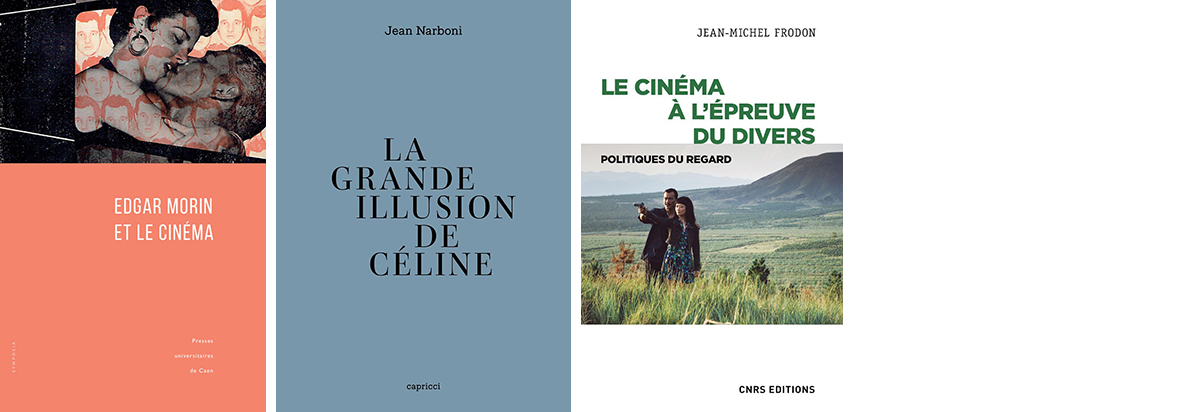
We kick off our autumn edition with a series of new French publications. Edited and collected by Valérie Vignaux, published by Presses universitaires de Caen, Edgar Morin et le cinema explores the thinking on cinema of the French philosopher and sociologist. From 1945 to 1965, Morin devoted two decades of research to cinema, a period that may seem short in the light of his comprehensive career, but is brought to the fore by this publication as fundamental to the origin of his thought. Morin’s film activities were divided between theoretical reflections – with the publication of two major books, Le cinéma ou l’homme imaginaire (1956) and Les stars (1957) – and filmmaking experiences, with Chronique d'un été (1961), a film, made with Jean Rouch, that would go down in documentary film history as a milestone.
In La grande illusion de Céline by Jean Narboni, former editor-in-chief of Cahiers du Cinéma, La grande illusion is a mistaken belief, and the title of a 1937 film by Jean Renoir. The book starts from Céline’s furious attack on the film in his antisemitic pamphlet Bagatelles pour un massacre, and the conflict that ensued. It crosses paths with a number of cinema figures including Eric von Stroheim, Marcel Dalio, Jean Gabin and Sylvain Itkine, but also with the more obscure and high-profile figures of an ethnologist and a delirious onomastic specialist. Neither a trial for the prosecution nor yet another speculation on the distinction between writer and anti-Semitic vampire, this is rather a fable. The pseudo-scientific hate speech of the time, Narboni points out, is reminiscent of that of today’s social networks. You can take a look at the first chapter on the website of capricci.
Starting from the observation how cinema influences and has been influencing individual and collective behaviour in everyday life, also in the field of public policy, in the media, in legislative and regulatory measures, Jean-Michel Frodon questions the relationship to diversity in his new book Le cinéma à l’épreuve du divers. Politiques du regard, published by CNRS Editions. Cinema, Frodon states, contributes to a way of inhabiting the world, in reality and in imagination, with all those who inhabit it, human and non-human. This book highlights the manifestations of this diversity and their consequences, drawing on many films, both famous and lesser known. It shows how these films, their stories, their choices of direction, the techniques they use, their conditions of production and distribution transform our ways of looking, feeling and understanding.
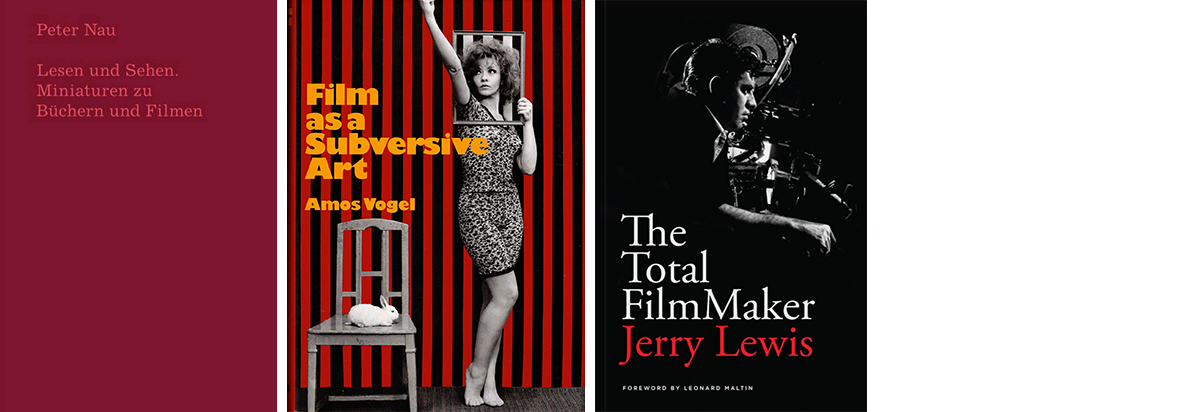
“Terrible magazine if you want to know what movies to see, but the best literary magazine in Germany,” Harun Farocki once said about Filmkritik. Along with Farocki, Frieda Grafe and other writers and filmmakers, it was in this magazine that Peter Nau helped shape the then still early film criticism. It was in this magazine too that for years, Nau developed his so-called “miniatures”: condensed thoughts on books, films and paintings. Lesen und Sehen, his fourth book of miniatures, edited by Volker Pantenburg, is published by the Harun Farocki Institut & Synema. As the afterword reads: “In reading a book, in watching and listening to films, we become the resonating body and screen for something outside ourselves. What it is about is the magic of regaining our participation in the totality of the world. Every individual who does not want to succumb to prosaic desiccation strives, through this or some other means, to bring himself into a conscious relationship with that which he knows to be stronger than himself.”
This year, 100 years have passed since Amos Vogel, founder of Cinema 16 and of the Lincoln Center Film Department, critic, curator and teacher, was born in Vienna. To celebrate his legacy, the Austrian Film Museum has been organizing events throughout the year. Later this month, from October 22 to November 25, a joint retrospective of the Viennale and the Austrian Film Museum pays homage to his masterpiece Film as Subversive Art. Originally published in 1974, Amos Vogel described this book as dealing with “the accelerating worldwide trend toward a more liberated cinema, in which subjects and forms hitherto considered unthinkable or forbidden are boldly explored.” To top it all off, late October the New York City based small press and online bookseller The Film Desk is publishing a revised edition of the book edited by Jim Colvill and Herb Shellenberger complete with a new foreword by Herb Shellenberger.
More celebrations means more re-releases. 50 years after Amos Vogel was born, Jerry Lewis published The Total FilmMaker. “A half million feet of audio tape compiled, examined, listened to, transcribed and finally edited into respective categories,” as Lewis described it in the foreword, this classic 1971 book is composed of insights from his guest lectures at USC Film. Among his then-students were a young George Lucas and Steven Spielberg. The 50th anniversary edition is being released by the Jerry Lewis Estate and Michael Wiese Productions with new photos and a new foreword by Leonard Maltin.
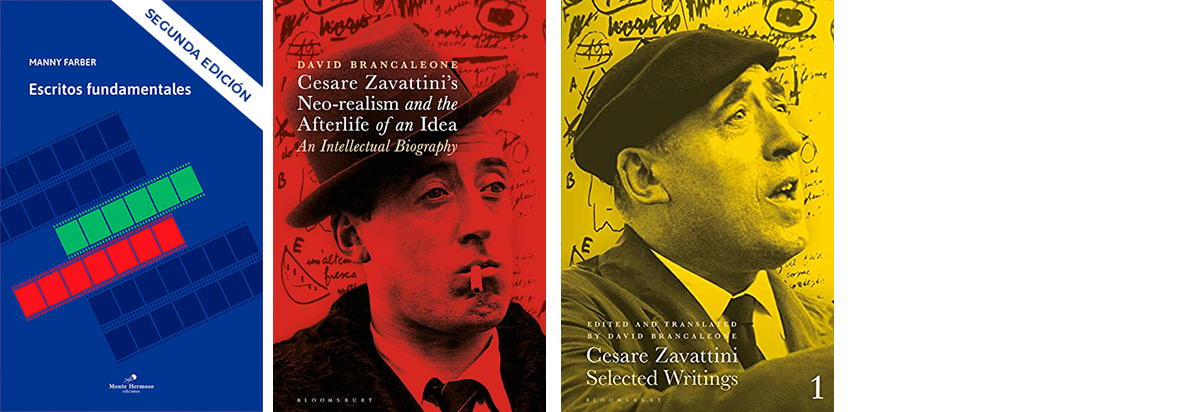
In the introduction to Negative Space, painter and film-critic Manny Farber writes: “Most of what I liked is in the termite area. The important trait of termite-fungus-centipede art is an ambulatory creation which is an act both of observing and being in the world, a journeying in which the artist seems to be ingesting both the material of his art and the outside works through a horizontal coverage.” According to Hugh M. Davies, Farber “Distrusts the “big idea” in his painting, preferring, in “termite” fashion, to sneak up and compose the Big Picture through a sustained sequence of apparently unrelated small observations and discoveries”, similarly with his practice of film criticism. As the title implies, Escritos fundamentales, translated to Spanish by Ernesto Montequin & Carla Nuin and published by Monte Hermoso Ediciones is a collection of indispensable texts by Manny Farber, including “White Elephant Art vs. Termite Art”.
Another film critic who was also an artist is Cesare Zavattini. As a screenwriter, he’s well known for Ladri di biciclette, Umberto D. and Miracolo a Milano. As the title indicates, in Cesare Zavattini’s Neo-realism and the Afterlife of an Idea: An Intellectual Biography David Brancaleone gives an itinerary of Zavattini's development as a writer and pioneering magazine publisher. Along the timeline of Zavattini's life, spanning from 1902 to 1989, this book also delineates an era of Italian film culture. In addition, David Brancaleone has edited the accompanying Cesare Zavattini: Selected Writings, also published by Bloomsbury. Volume one includes thirty-nine scenarios and two treatments, short stories, fictional interviews and ironic faux reportages. Volume two brings to the fore Zavattini's ever-evolving internal dialogue between diary writer, screenwriter, narrative writer, and political activist.
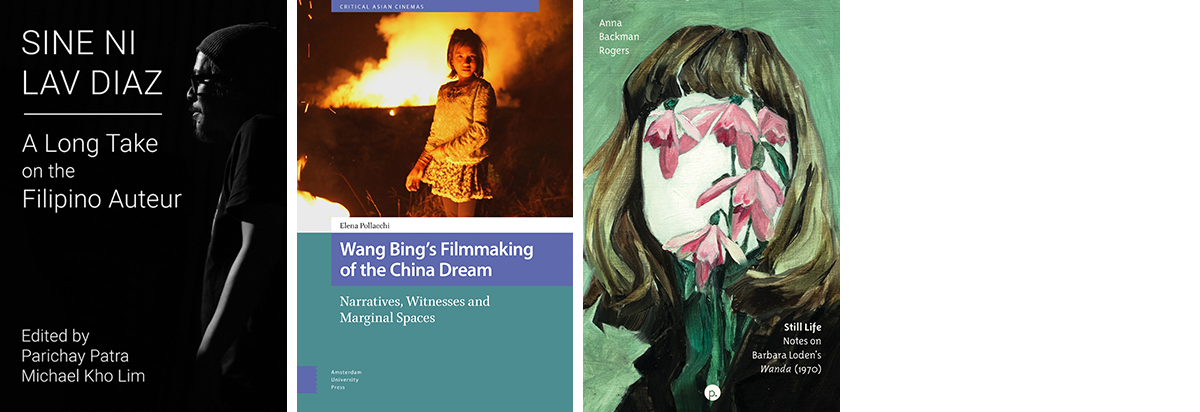
Next in our overview are two extensive studies on the work of two major figures of Asian cinema. On November 22, Intellect Books published Sine ni Lav Diaz: A Long Take on the Filipino Auteur, edited by Parichay Patra and Michael Kho Lim, which deals with the work of Filipino filmmaker Lav Diaz. The book explores Diaz’ oeuvre in three connecting chapters, offering a nuanced overview of the filmmaker from various perspectives. Included in the book are contributions by Adrian Martin, Michael Guarneri, Marco Grosoli and a chapter by Belgian film scholar Tom Paulus. The volume concludes with an interview carrying the rather cheeky title “A Lav Affair with Cinema”. The second publication is dedicated to the work of Wang Bing and was issued by Amsterdam University Press already this summer. Wang Bing's Filmmaking of the China Dream. Narratives, Witnesses and Marginal Spaces, authored by Senior Lecturer in Chinese Studies Elena Pollacchi, explores Wang’s portrayal of the voiceless in contemporary China and examines his composition of a counter-narrative to the so called “China Dream” state narrative. To do so, the volume builds on different articulations of space (labour, history, and memory) while its different contributors frequently branch out to other film histories.
On 22 July, independent non-profit publisher Punctum Books made available Still Life: Notes on Barbara Loden's Wanda (1970), an essay about Barbara Loden’s sole feature film. Anna Backman Rogers, its author, states in her introductory notes that Still Life is not an another attempt at biography, but rather aims to disentangle the film’s raw aesthetics from Loden’s own life experiences, a much needed critical gesture to fully reappraise the film’s impact. In three sections Backman Rogers examines the film’s resonance by combining a more situating historical approach with a more formalistic shot-by-shot reading of the film, concluding with the assessment of the possibility to see Wanda as feminist art work as well as its current status in contemporary feminist politics. But the book is also interspersed with the author’s own affective responses, thus also articulating a way of “discovering and living with Wanda”. The publication has a Creative Commons license and is therefore freely accessible, whereas a print copy can also be bought.
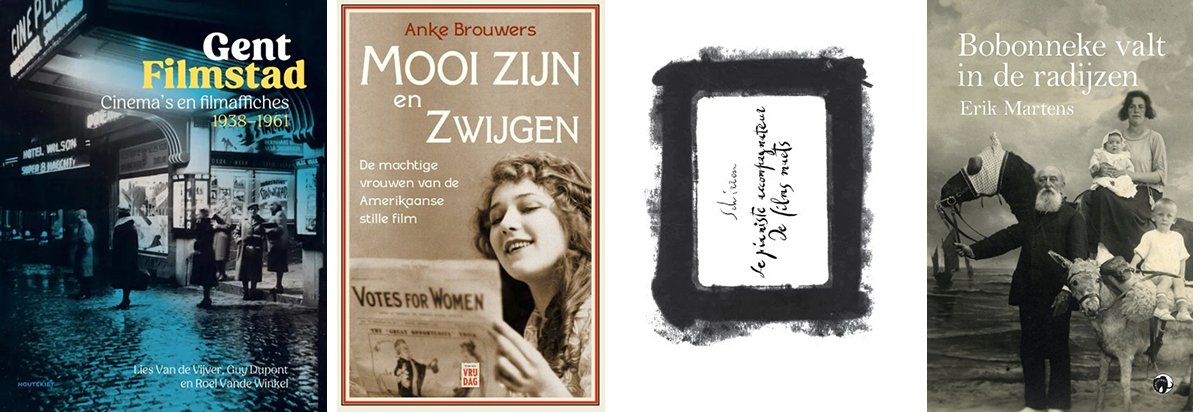
We’re excited to be able to announce four new Belgian publications, of which three in Dutch. In Gent Filmstad. Cinema’s en filmaffiches. 1938-1961, Lies Van de Vijver, Guy Dupont and Roel Vande Winkel, look at the flourishing film culture in Ghent during the 1930s, 1940s and 1950s. The authors delve into the enormous collection of more than 9,000, mainly Belgian, film posters, from the archives of the municipal police force, kept in the Ghent Archives. Rare photographs, building plans, film programmes, archive documents and interviews with the film-goers of the time complete the picture of the more than thirty movie theatres that Ghent had at that time, from the luxurious film theatres in the city centre to the modest cinemas in the neighbourhoods.
“In the golden years of silent cinema, was it really enough to have only ‘faces’, as a fictional film diva from the film Sunset Boulevard (1950) would have us believe?” This question is at the heart of Anke Brouwers’ Mooi zijn en zwijgen, which is available for pre-order at Uitgeverij Vrijdag. She takes a closer look at the “powerful women” of the American silent cinema, also those who were active behind the scenes.
On the occasion of their Fernand Schirren exhibition, CINEMATEK published the bilingual Le pianiste accompagnateur de films muets. De pianist die stille films begeleidt. Schirren (1920-2001) accompanied screenings of silent films right from the creation of the Belgian film museum in 1962. This manuscript, published for the first time, helps us understand how he became a master in the art of improvisation. (Related: text on Sabzian by Jean-Luc Plouvier, pianist accompanying silent films in CINEMATEK, available in Dutch and French)
In 1930, Antwerp pastry chef Maurice Lefèvre bought a camera with which he started filming family life. In the same year, his ice cream parlour on De Keyserlei in Antwerp opened and the Lefèvre family visited the World Fair in Antwerp. During the Second World War, the microbe passed from father to son. Five generations appear in the picture. Erik Martens meets the Lefèvres long after their death in the catacombs of the film archives where the past is immortalised. Films of the family open the door to other films that are rarely or never shown. In Bobonneke valt in de radijzen, the author dives into time and relives large and small histories from the front row.
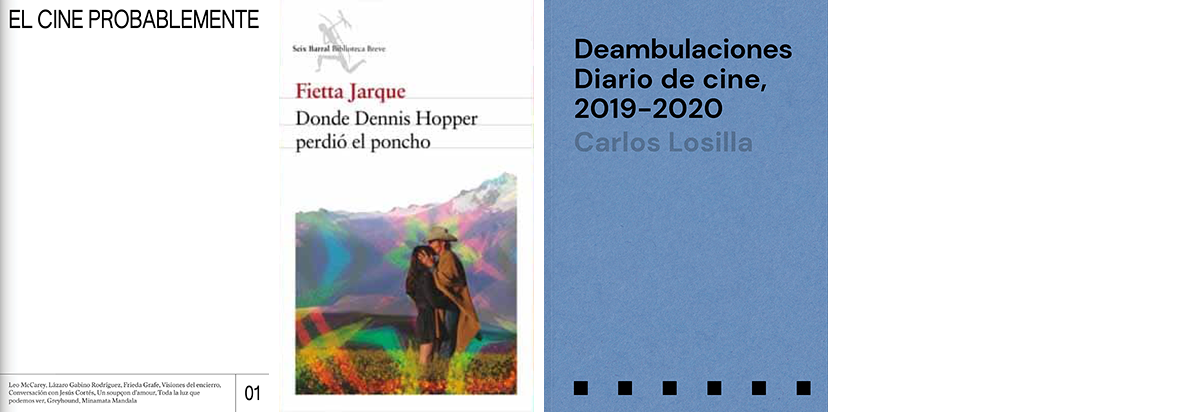
The first issue of El Cine Probablemente, a new Spanish language journal from Mexico, is now available for worldwide pre-order. Issue #1 includes 8 new Spanish translations of Frieda Grafe texts (for our Dutch-speaking readers: last year we published an extensive Dossier on the “Queen of German film criticism”) and new texts by, among others, Rafael Guilhem, Cristina Álvarez López, Ute Aurand, Laura Davis and Salvador Amores.
Note that Desistfilm has revived its book section which had been active only very shortly but was an important part of how they conceived the online magazine ten years ago. Their aim is to visibilize film publications from and about their region of Peru and Latin America by extension. The first new entries discuss Fietta Jarque’s book about the filming of Dennis Hopper’s The Last Movie (1971) in Chinchero, Cusco (published by Seix Barral Perú on 3 February 2021). The second highlight is Carlos Losilla’s film diary in which he, over the course of one year, talks about Tarantino and Pedro Costa, Hong Sang-soo and Kelly Reichardt, and tries to guess what cinema is and has been for him.

